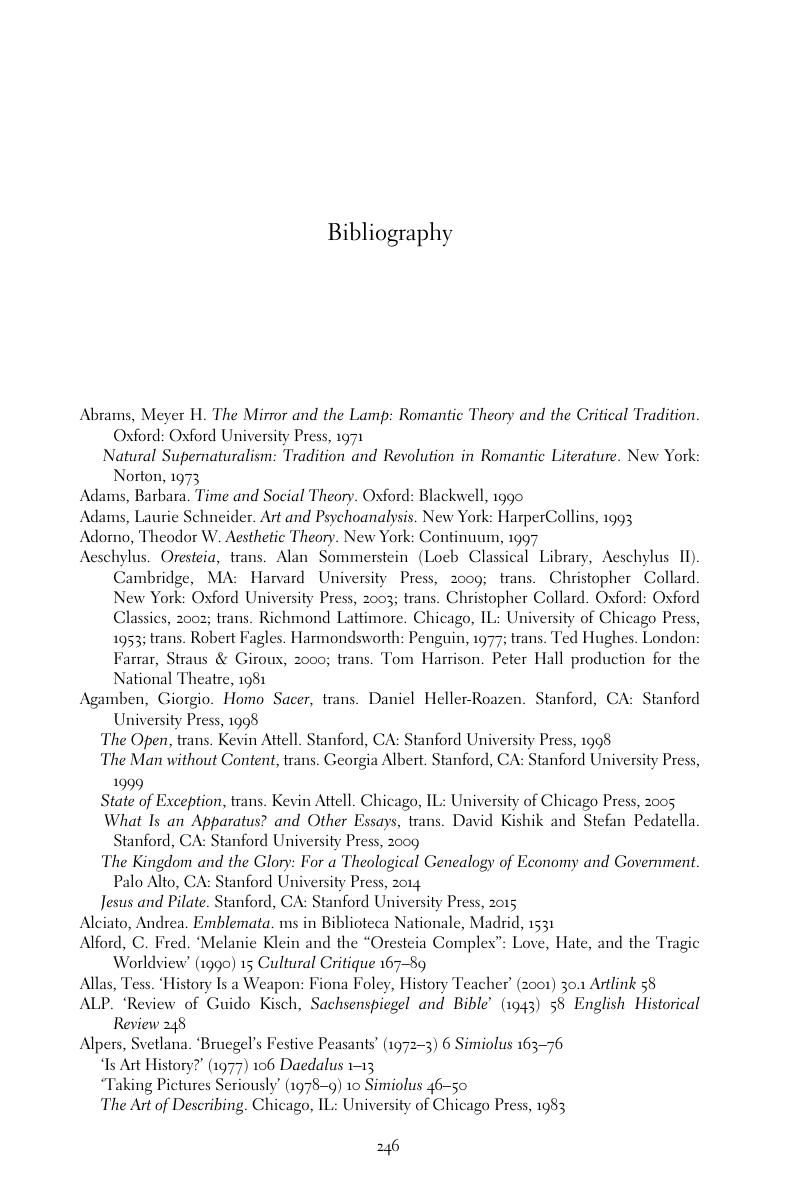Book contents
- Danse Macabre
- Danse Macabre
- Copyright page
- Dedication
- Epigraph
- Contents
- Plates
- Illustrations
- Acknowledgements
- Foreword
- 1 Bruegel’s Justice
- 2 Reynolds’s Justice, Blackstone’s Laws
- 3 Governor Arthur’s Proclamation
- 4 Turner’s Slave Ship
- 5 Klimt’s Jurisprudence
- 6 Bennett’s Laws
- 7 Cauduro’s Crimes
- Afterword
- Bibliography
- Index
- Plate Section (PDF Only)
- References
Bibliography
Published online by Cambridge University Press: 08 April 2019
- Danse Macabre
- Danse Macabre
- Copyright page
- Dedication
- Epigraph
- Contents
- Plates
- Illustrations
- Acknowledgements
- Foreword
- 1 Bruegel’s Justice
- 2 Reynolds’s Justice, Blackstone’s Laws
- 3 Governor Arthur’s Proclamation
- 4 Turner’s Slave Ship
- 5 Klimt’s Jurisprudence
- 6 Bennett’s Laws
- 7 Cauduro’s Crimes
- Afterword
- Bibliography
- Index
- Plate Section (PDF Only)
- References
Summary

- Type
- Chapter
- Information
- Danse MacabreTemporalities of Law in the Visual Arts, pp. 246 - 276Publisher: Cambridge University PressPrint publication year: 2019



